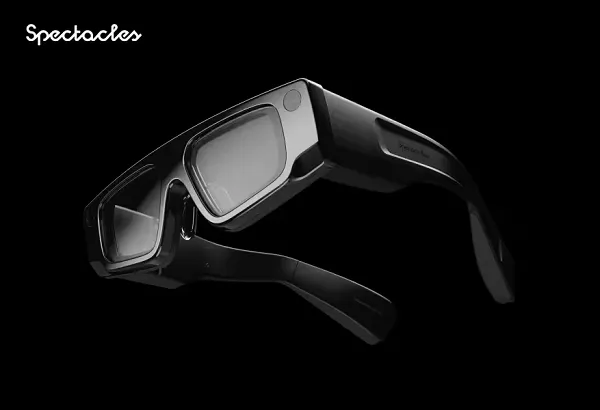Snapchat is taking the next steps into AR wearables, with a new version of its Spectacles glasses that incorporate AR overlays on your field of vision.
But you won’t be able to get your hands on them just yet.
As you can see in the examples in this clip, Snapchat’s new Spectacles will enable AR interaction, in various ways, with the effects visible via your glasses.
Which is not entirely new. Snap’s been working on this new version of its Spectacles glasses for years, with various developers having access to an early version of the device. Which is the same approach that Snap’s taking with this new version, with developers being given early access for a yearly fee, which enables them to build for the next generation of the device, and will enable Snap to keep developing them ahead of a commercial release.
Which ideally will include some refinement of the look of the device.
In development, Snap’s AR glasses looked a little too sharp, too futuristic maybe.


This new version looks pretty much the same, though with a bit more bulk added to the frames to incorporate all the new tech.


As explained by Snap:
“Spectacles are the result of a decade of research and development to introduce hardware that breaks the bounds of screens and brings people together in the real world. Spectacles pack incredible technology into AR glasses that weigh less than half the weight of a typical VR headset at only 226 grams. They are equipped with four cameras that power the Snap Spatial Engine and enable seamless hand tracking.”
Indeed, ever since the initial launch of Spectacles back in 2016, it has seemed that Snap was working towards full AR functionality for the device, especially when it also launched World Lenses at the same time, which interact with real world environments.
It’s taken nearly a decade, but Snap’s been working on its advanced Spectacles in the background, building towards this next stage. And now, with both Meta and Apple stomping into the AR wearables space, Snap’s also stepping forward, with what may end up being a more popular variation on the same.
Wearers will be able to control the new Spectacles experience via their mobile device:
“Through the new Spectacles app, you can use your phone as a custom game controller with Lenses, launch Spectator Mode so friends without Spectacles can follow along, mirror your phone screen, and more.”
Snap’s next generation Spectaces are powered by the new “Snap OS”, which will enable wearers to interact with Snap’s new AR experiences by using both their hands and voice. The latter element will also be helped by Snap’s expanded partnership with OpenAI, which, at this stage, will help developers new was to build AR experiences by using AI assistance.
“Snap OS brings Spectacles to life through an intuitive interface and capabilities that reflect how people naturally interact with the world. You can easily navigate Snap OS with your hands and voice – and the main menu is always in the palm of your hand. The Snap Spatial Engine understands the world around you so that Lenses appear realistically in three dimensions. An astounding 13 millisecond motion-to-photon latency renders Lenses with incredible accuracy, integrating them naturally into your environment.”
So, will it work, and will Snap be able to compete with the bigger players to make noise in the AR wearables space?
Well, Snap does have a lot going for it, in terms of youth appeal and creative nous, which has ensured that it’s been able to build unique, engaging AR experiences, and lead the way on such thus far. But its more well-resourced competitors could still blow it out of the water with more advanced capabilities, while the more chunky look of the frames could also be a turn-off, especially when Meta’s Ray Bans look much more natural.
But then again, we haven’t seen Meta’s fully AR capable glasses as yet, which will also end up being more stocky, in order to incorporate all of the required tech. So maybe, this isn’t a major factor, and the only real differentiators will be price and experience.
Price is still unclear, with Snap only leasing these new glasses to developers for $1,188 per year at this stage. Presumably, that would suggest that these will be expensive, while Meta’s working to keep the costs down as much as possible to ensure optimal take up.
That could end up being the key threshold for mass adoption, with the cheaper version of functional AR glasses potentially set to dominate the market. Indeed, Apple’s $3,499 VisionPro was ridiculously priced, and has failed to gain traction as a result.
Snap’s still seemingly a way off from pitching a retail price, but the fact that it’s even at this stage is significant, given the company’s broader cost-cutting and business challenges.
Can Snap actually compete with the bigger players? Looks like we’re going to find out.















